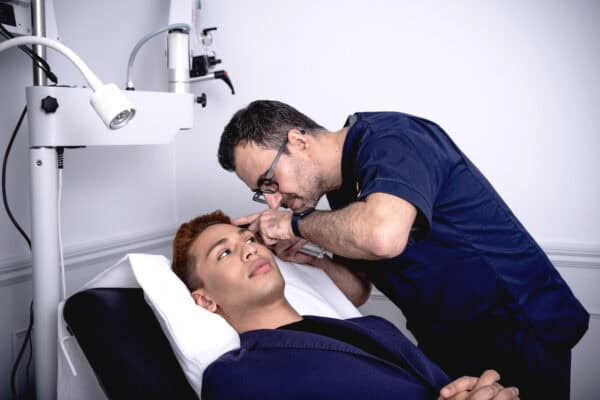There are around 17,500 melanoma and 150,000 non-melanoma cases of skin cancer per year in the UK, and as we start heading into summer, Dr Rupa Parmar, GP and Medical Director of Midland Health, is raising awareness about the lesser-known skin cancer symptoms that shouldn’t be ignored.
Irritation
Itchy or irritated skin can be a sign of non-melanoma skin cancer, due to inflammation caused by the cancerous cells. If the itching is persistent and has no clear cause, it could be the start of a growth, rash, or bump, and it’s important to see your GP to rule out any worrying possibilities.
Clear Bumps
A small, shiny, and clear bump on the skin can be a sign of basal cell carcinoma. It’s described as waxy and mostly appears on areas that have been exposed to the sun, such as your face or arms. In its earliest stages, it may seem similar to a normal spot, but unlike regular acne, it will not quickly heal and may even grow in size. If it hasn’t healed in four weeks, it’s recommended to see a doctor.
Bleeding or Oozing
An oozing sore that hasn’t healed for four weeks or a new growth that bleeds easily when touched are potentially signs of skin cancer. Some types of skin cancer can also leak fluid and may develop into ulcers.
Scaly Patches
Many types of skin cancer, such as basal or squamous cell carcinoma, appear as crusty areas of skin. However, a scaly patch may instead be a symptom of Bowen’s disease, an easily treatable and early form of skin cancer that occurs when spending too much time unprotected in the sun. If left, it has the possibility of turning into a more serious form of cancer, so early intervention is crucial.
Non-Skin Symptoms
Although most cases of skin cancer manifest as physical issues on the skin, some symptoms, like unexplained fatigue, a loss of appetite, and achiness, can be less visible.
Persistent Skin Problems
Most skin problems, like bumps or irritation, heal by themselves within weeks. If it hasn’t gone away for a while, though, this could be a sign of skin cancer, so it’s crucial to get any persistent issues checked out for your peace of mind.
Dr Rupa Parmar said, “Although it’s important to be conscious of the lesser-known signs of skin cancer, everyone should still be aware of the most common symptom. See a GP as soon as possible if a mole has changed size, colour, or shape, is painful, or crusty. Moles should be small, round, and only one colour.
“Almost 90% of skin cancer cases are caused by overexposure to ultraviolet radiation (UV), which can come from spending too much time in the sun without protection or using tanning beds. Even if the sun isn’t shining, it’s still possible to be exposed to UV. That is why it’s important to check the UV index before going out, wear SPF, and avoid sunbeds to reduce your risk of skin cancer.
“Early intervention is crucial as the sooner skin cancer is diagnosed, the sooner it can be treated. You should check yourself regularly for any skin changes, see your GP if you notice symptoms, avoid preventable skin cancer risks such as tanning beds, and always protect yourself from the sun. It’s also important to know your skin and what is normal for you, so you can easily spot any worrying changes.”



